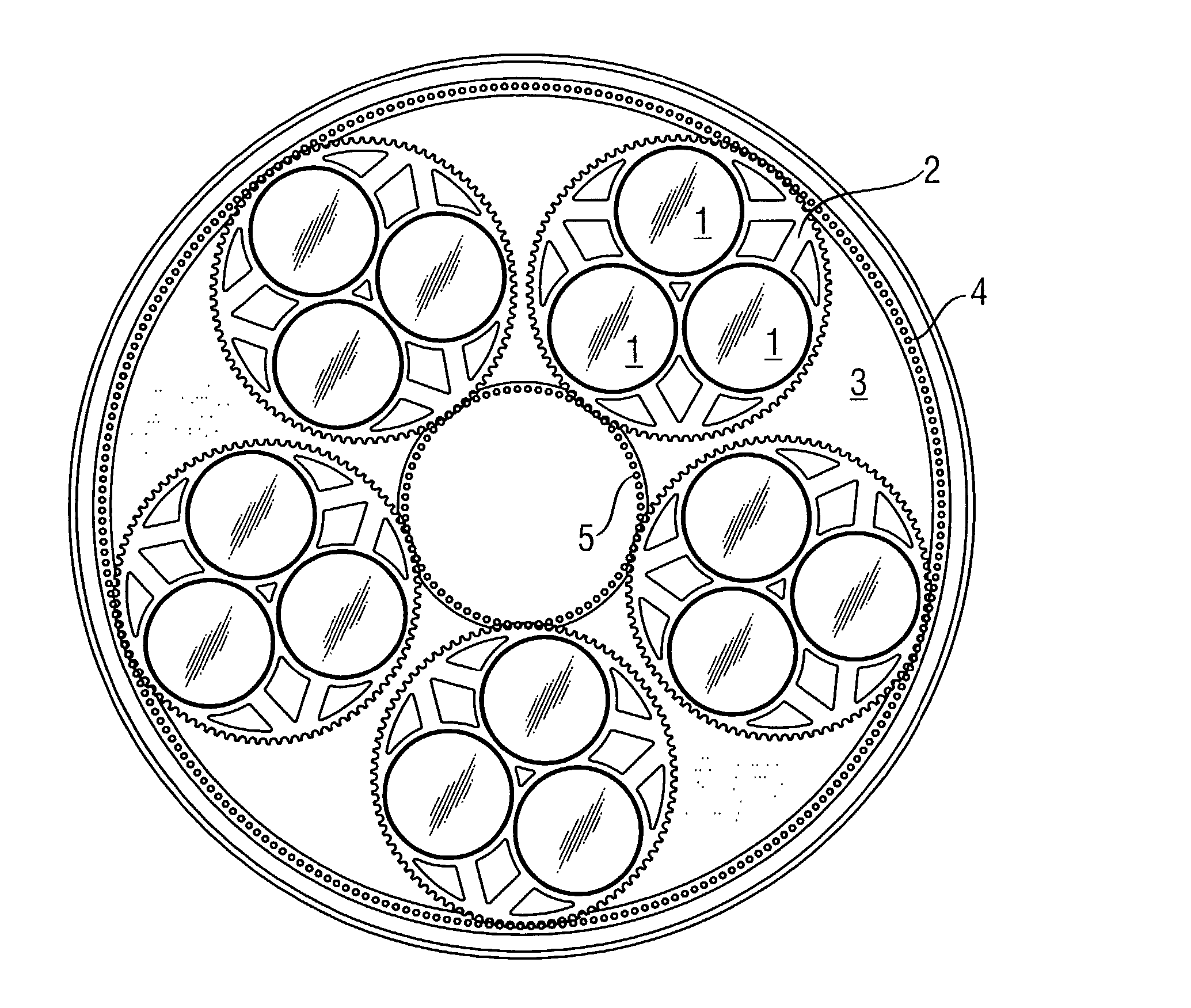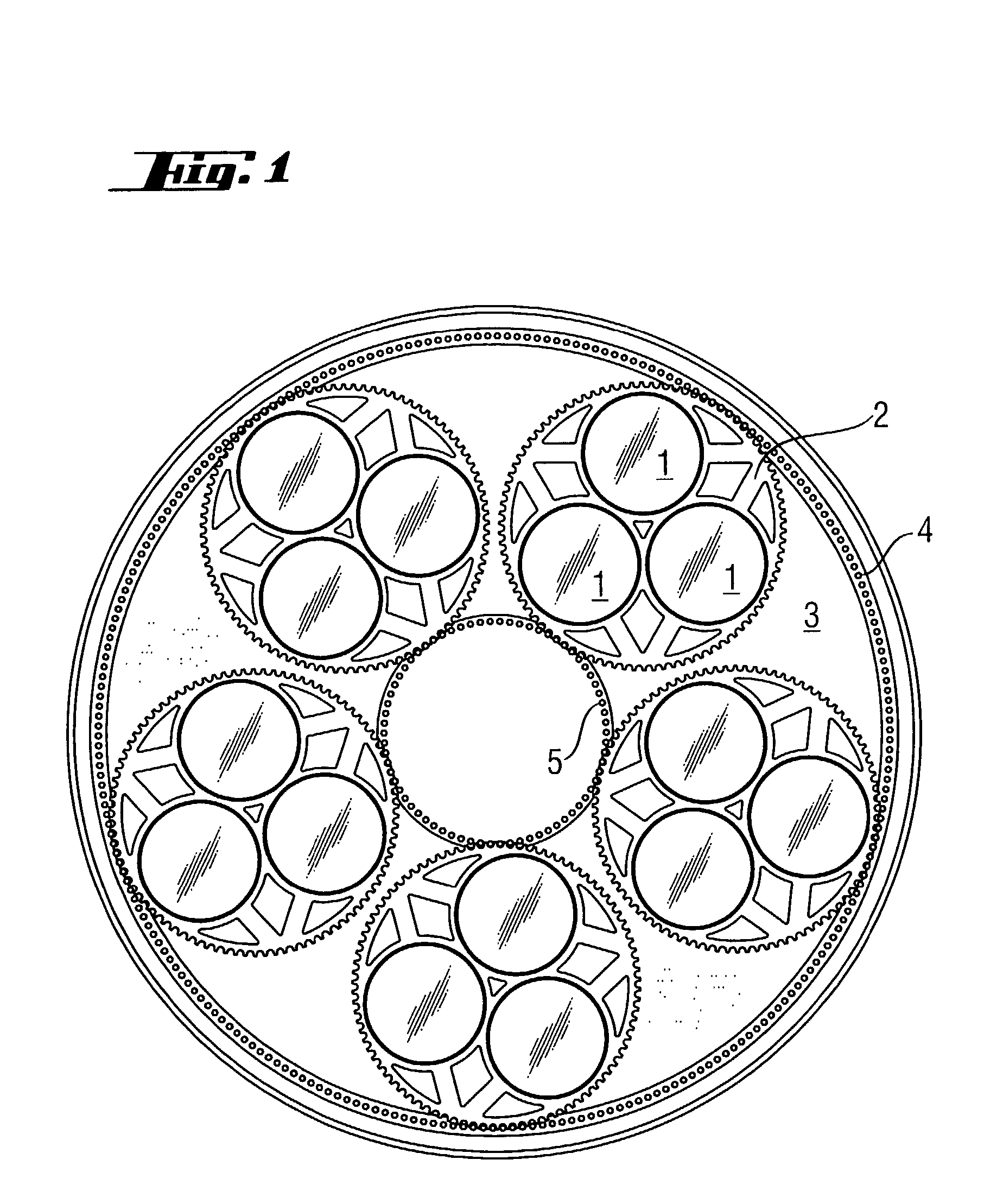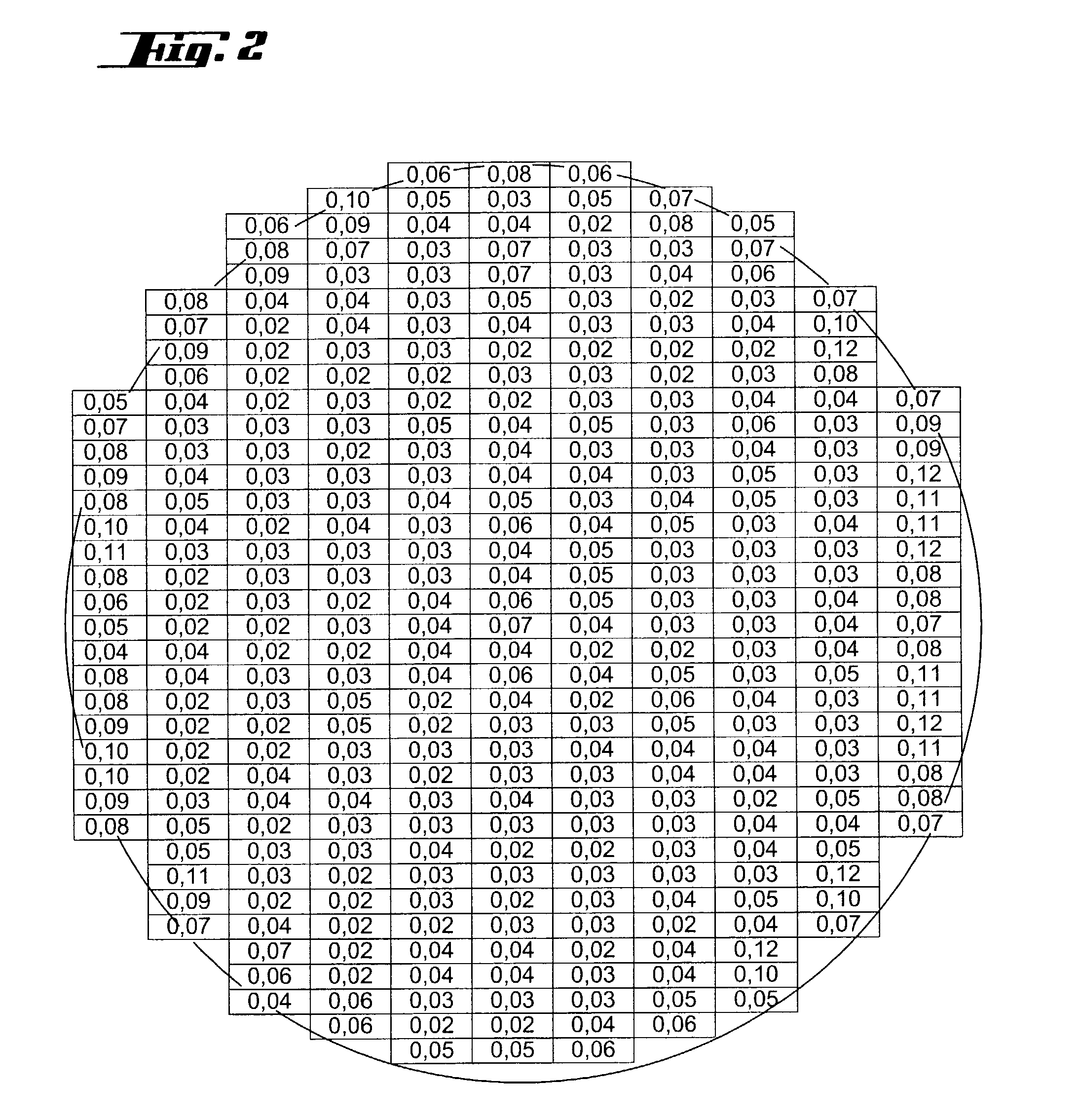Coated silicon wafer and process for its production
a technology of silicon wafers and coatings, applied in the direction of crystal growth processes, basic electric elements, electrical equipment, etc., can solve the problems of unable to predict, produce wafers, and lose corresponding components,
- Summary
- Abstract
- Description
- Claims
- Application Information
AI Technical Summary
Benefits of technology
Problems solved by technology
Method used
Image
Examples
example
[0057] The procedure was as in the Comparative Example, with the following differences:
[0058] (1) The grinding process was carried out in such a way that a concave thickness distribution was produced by inclining the axis of rotation of the grinding wheel with respect to that of the wafer holder.
[0059] (2) Before the double-side polishing, the silicon wafers were divided into groups of 15 wafers which were to be polished simultaneously and in which the thickness difference between wafer edge and wafer center within each group was 4 .mu.m.+-.1 .mu.m.
[0060] (3) During the sorting into groups, account was also taken of the fact that the distribution (in accordance with the Comparative Example) of the mean thicknesses of the silicon wafers within each group was .+-.1 .mu.m. Overall, therefore, four thickness groups were produced ([802.+-.1] .mu.m; [804.+-.1] .mu.m; [806.+-.1] .mu.m; [808.+-.1] .mu.m).
[0061] (4) For the double-side polishing, carriers with a thickness of 773 .mu.m were u...
PUM
| Property | Measurement | Unit |
|---|---|---|
| thickness | aaaaa | aaaaa |
| diameter | aaaaa | aaaaa |
| flatness | aaaaa | aaaaa |
Abstract
Description
Claims
Application Information
 Login to View More
Login to View More - R&D
- Intellectual Property
- Life Sciences
- Materials
- Tech Scout
- Unparalleled Data Quality
- Higher Quality Content
- 60% Fewer Hallucinations
Browse by: Latest US Patents, China's latest patents, Technical Efficacy Thesaurus, Application Domain, Technology Topic, Popular Technical Reports.
© 2025 PatSnap. All rights reserved.Legal|Privacy policy|Modern Slavery Act Transparency Statement|Sitemap|About US| Contact US: help@patsnap.com



